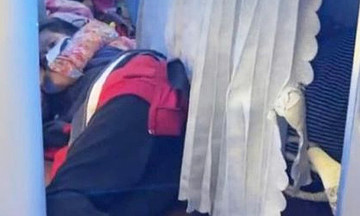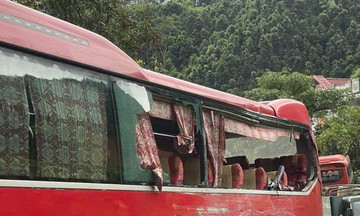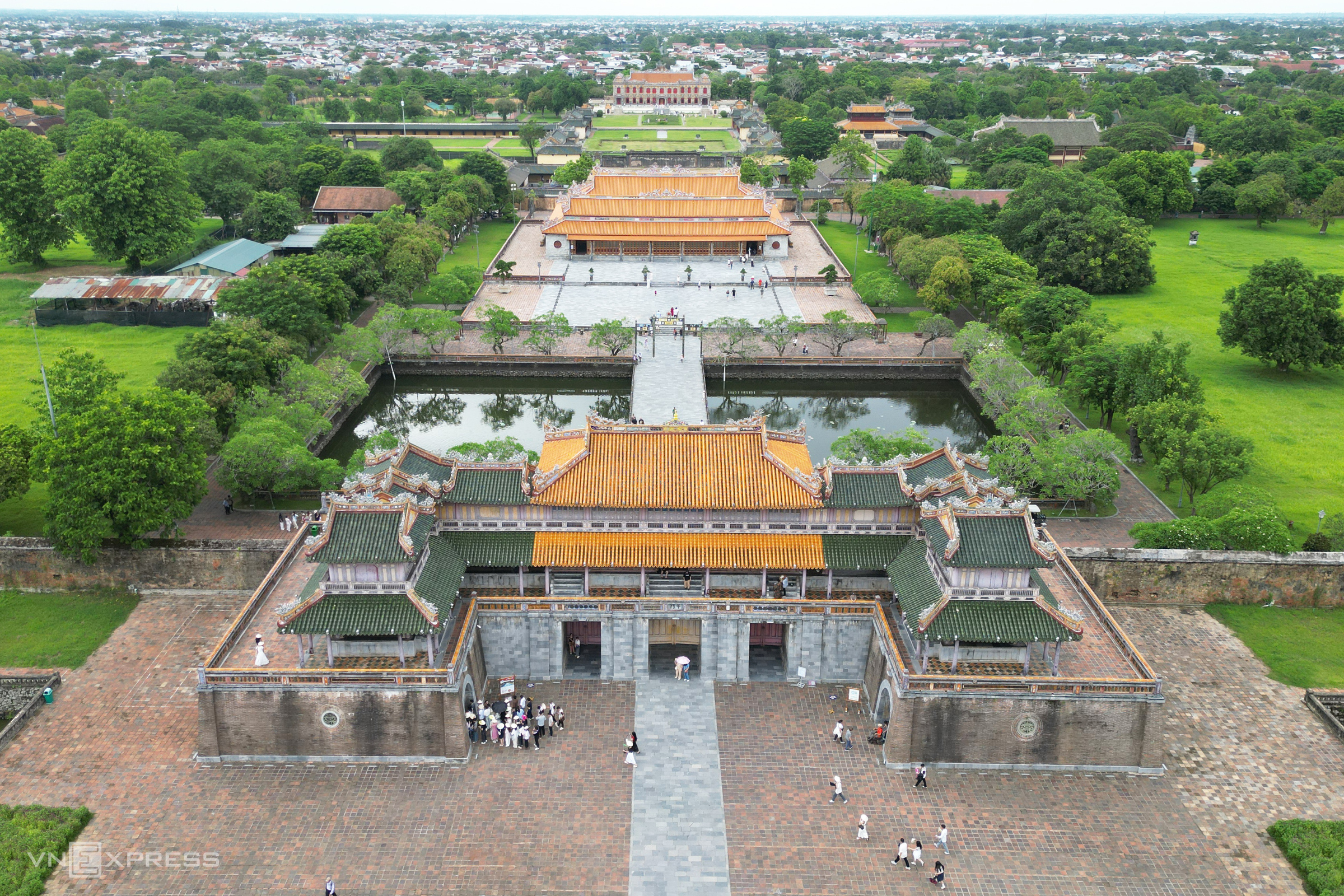 |
The upper roof of Ngu Phung Pavilion is divided into 9 sections, adorned with phoenix figures along the ridges. The central roof section is covered with yellow tube tiles, while the others are covered with green tube tiles.Vo Thanh |
The Ngu Phung Pavilion, situated above Ngo Mon, the main gate leading into the Hue Imperial Citadel, was built in 1833 during the reign of emperor Minh Mang. It was here, 80 years ago, on 30/8/1945, that emperor Bao Dai handed over the imperial seal and sword to representatives of the provisional government of the democratic republic of Vietnam and announced his abdication before the people.
Below Ngu Phung Pavilion are five gates. The center gate is Ngo Mon, flanked by Ta Giap Mon and Huu Giap Mon, with Khuyet Mon Ta and Huu on the outer sides.
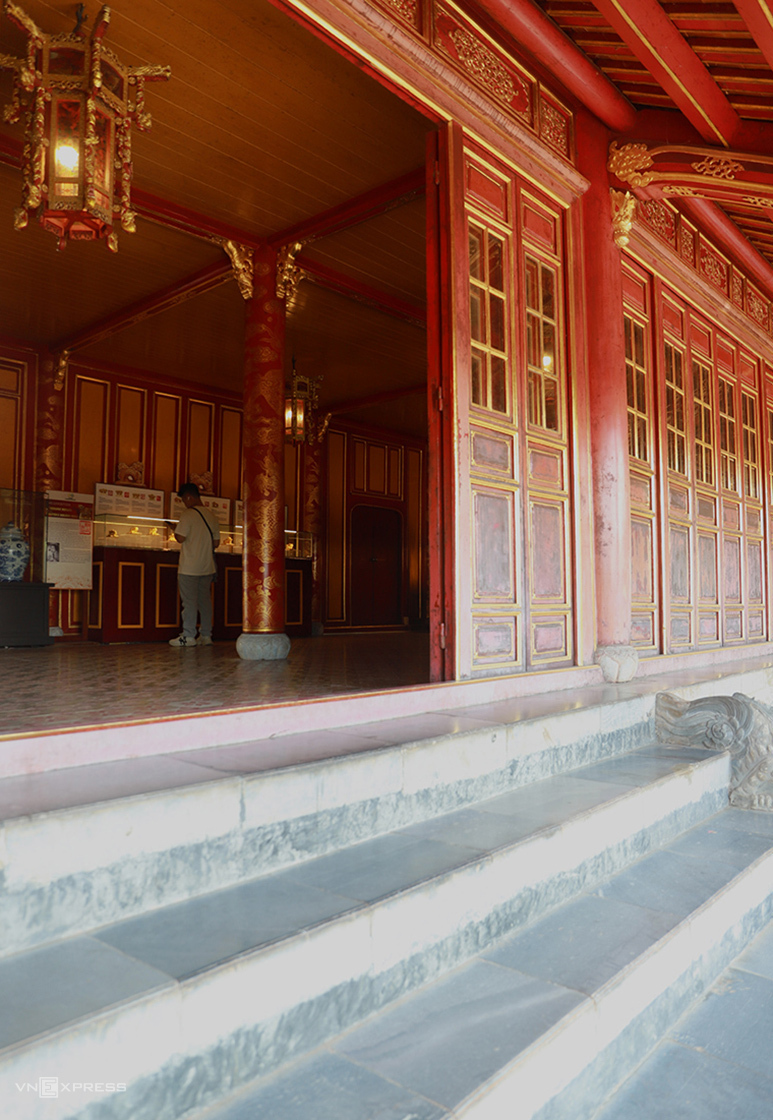 |
The two-story Ngu Phung Pavilion features a wooden frame constructed entirely of ironwood, with 100 columns. The lower roof sections are interconnected, encircling the pavilion to shelter the surrounding railings.Vo Thanh |
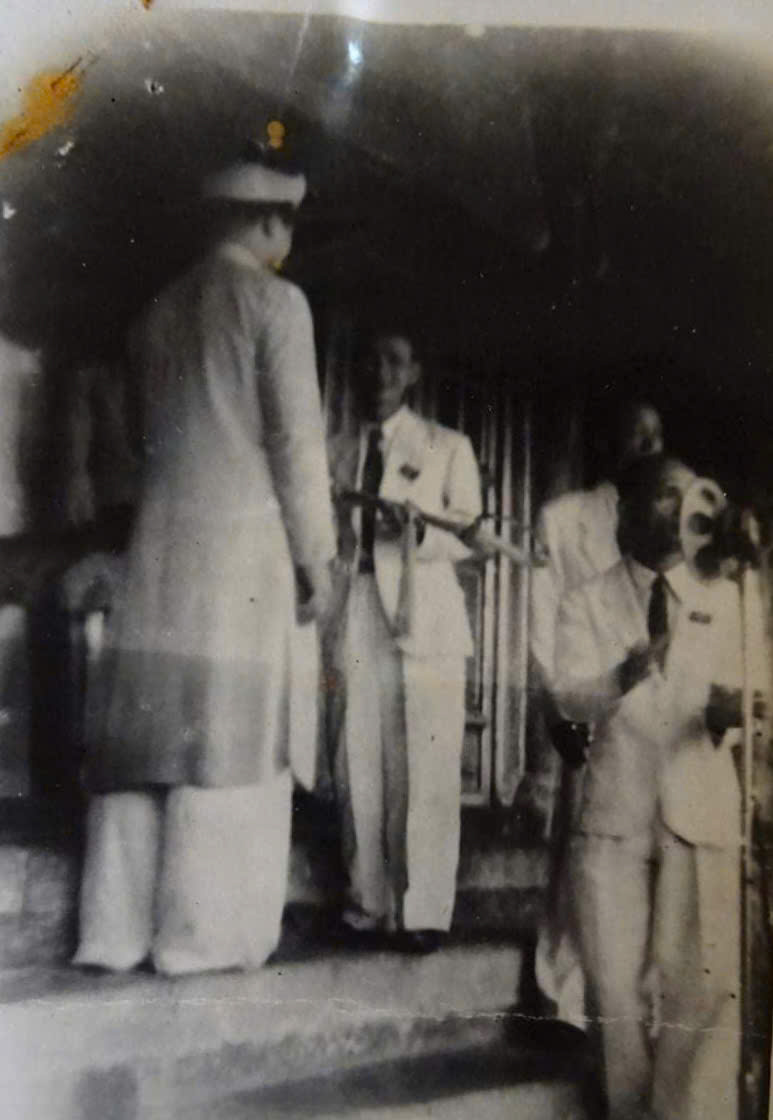 |
The pavilion's railings are decorated with yellow tube tiles. Visitors can enjoy views of Ky Dai, Thai Hoa Palace, and Thai Dich Lake from Ngu Phung Pavilion.Vo Thanh |
80 years ago, in front of the main entrance of Ngu Phung Pavilion, emperor Bao Dai, dressed in a traditional ao dai and turban, presented the imperial seal and sword to Tran Huy Lieu, along with two other members of the provisional revolutionary government's delegation: Nguyen Luong Bang and Cu Huy Can.
Emperor Bao Dai read his abdication decree, famously declaring, "I would rather be a citizen of an independent country than the king of an enslaved nation." This event marked the end of 143 years of Vietnamese feudalism (1802-1945).
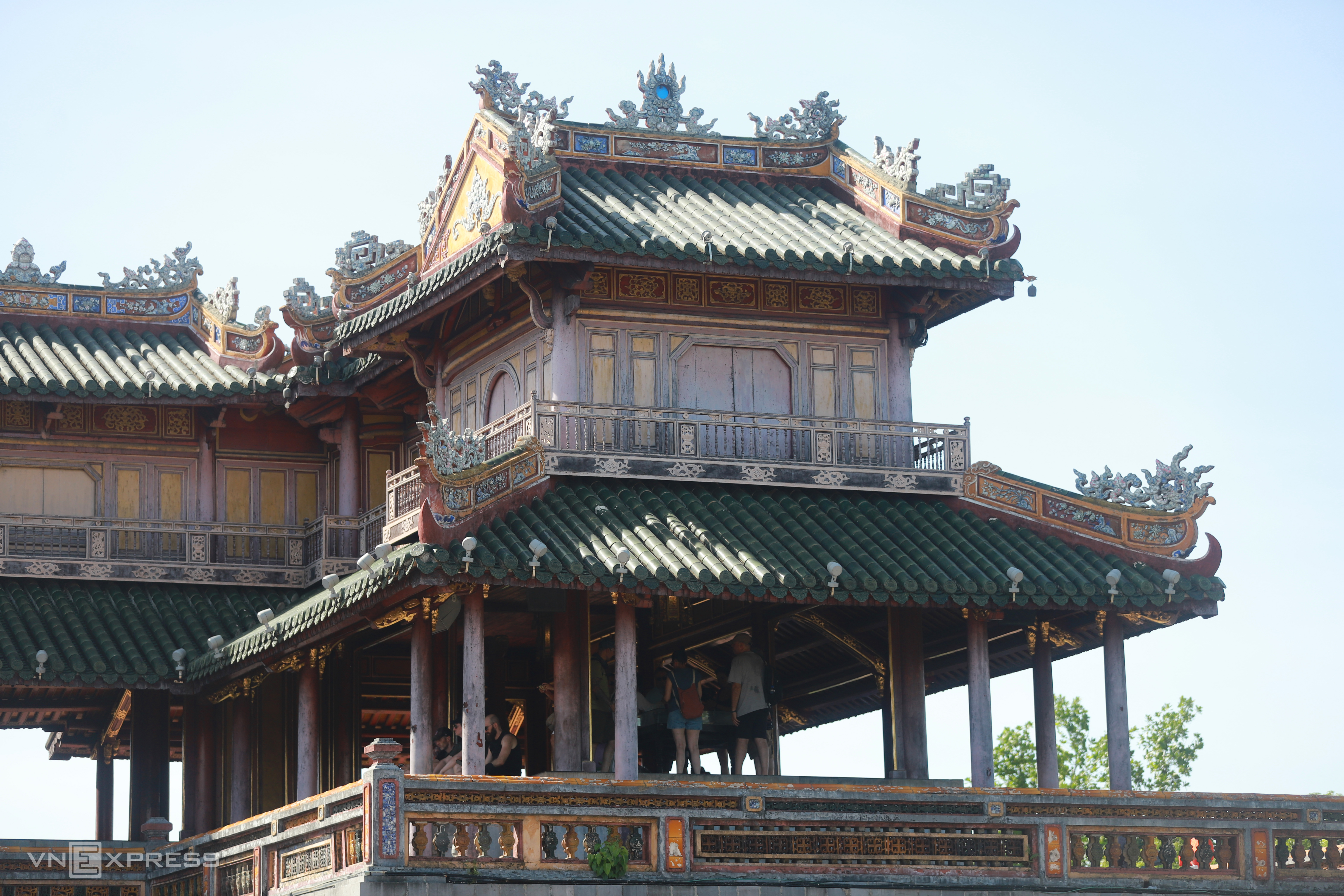 |
The wooden lantern system, lacquered and gilded, depicts phoenixes and dragons.Vo Thanh |
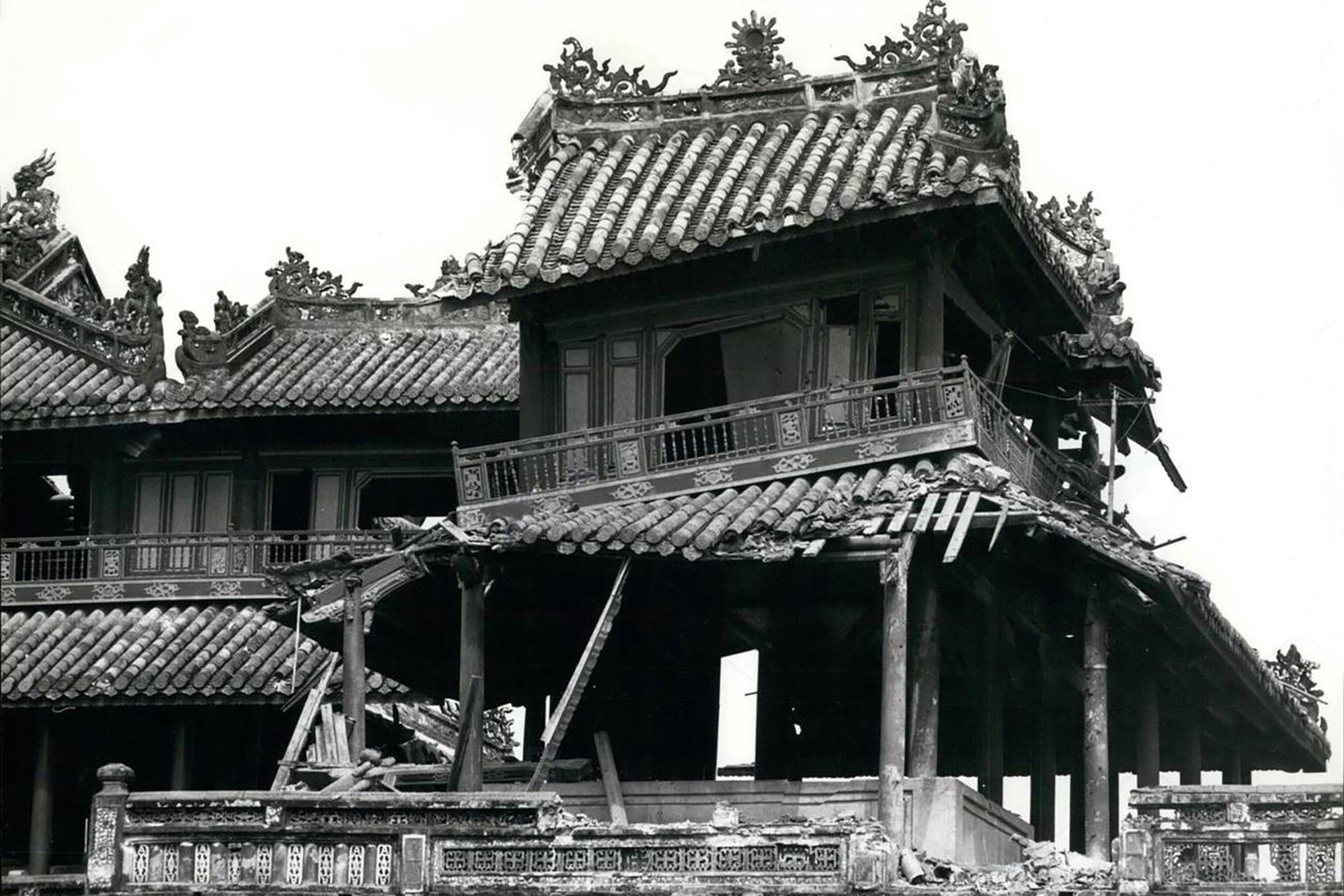 |
Inside Ngu Phung Pavilion, numerous ironwood columns are lacquered and gilded, with dragon motifs. Today, this area displays Nguyen Dynasty artifacts and hosts exhibitions for visitors.Vo Thanh |
During the war, Ngu Phung Pavilion suffered heavy damage. Notably, during the Tet Offensive of 1968, a section of the pavilion was nearly destroyed by bombs.
In 2012, the Hue Monuments Conservation Center began a major restoration of Ngu Phung Pavilion, with a total cost of nearly 80 billion VND. After eight years of closure, the project was completed in 2021, restoring the pavilion to its original splendor.
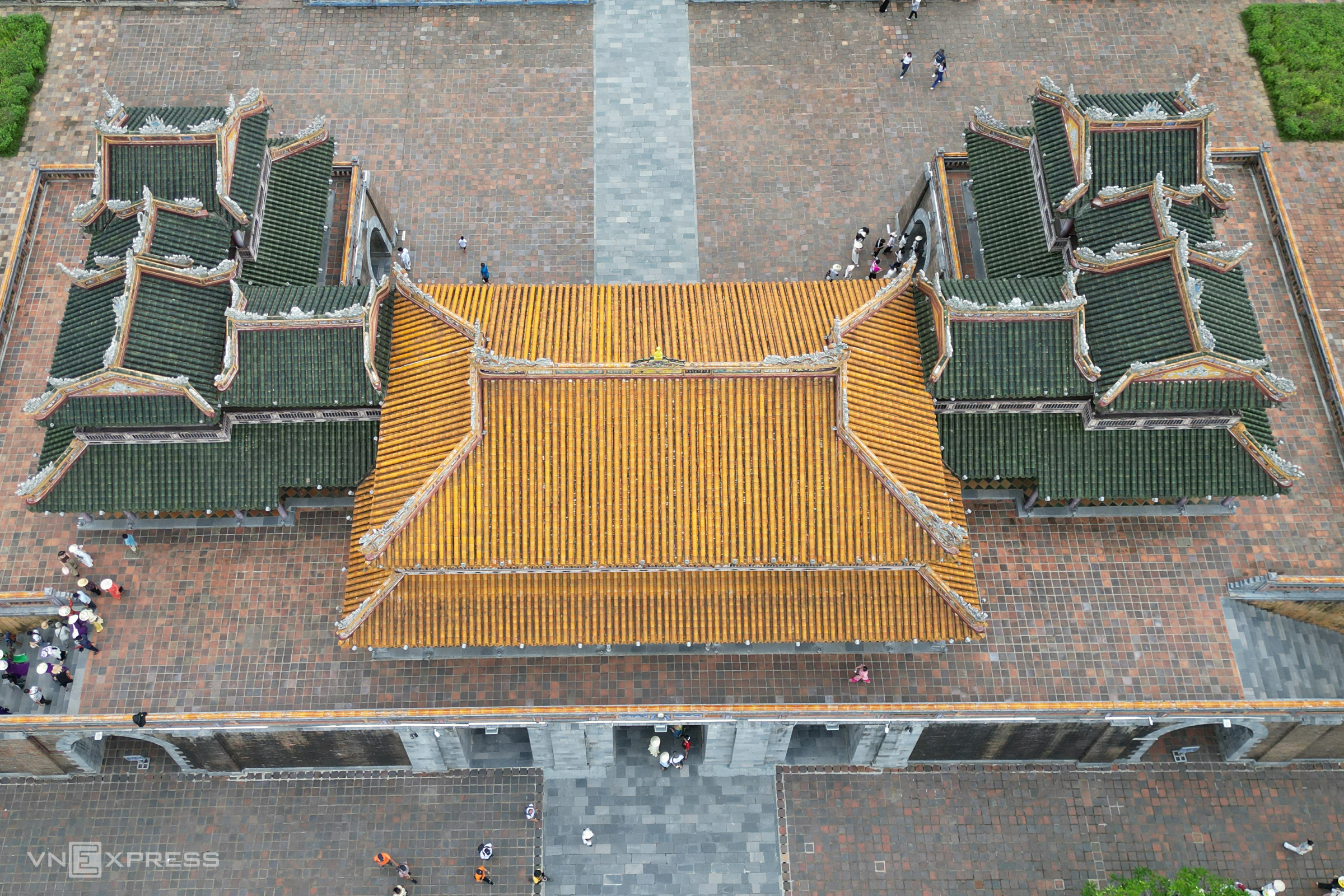 |
Ceramic replicas of Nguyen Dynasty seals are on display at Ngu Phung Pavilion. Many visitors express admiration for the intricate craftsmanship of the reproduced seals.Vo Thanh |
The upper roof of Ngu Phung Pavilion is divided into 9 sections, adorned with phoenix figures along the ridges. The central roof section is covered with yellow tube tiles, while the others are covered with green tube tiles.Vo Thanh
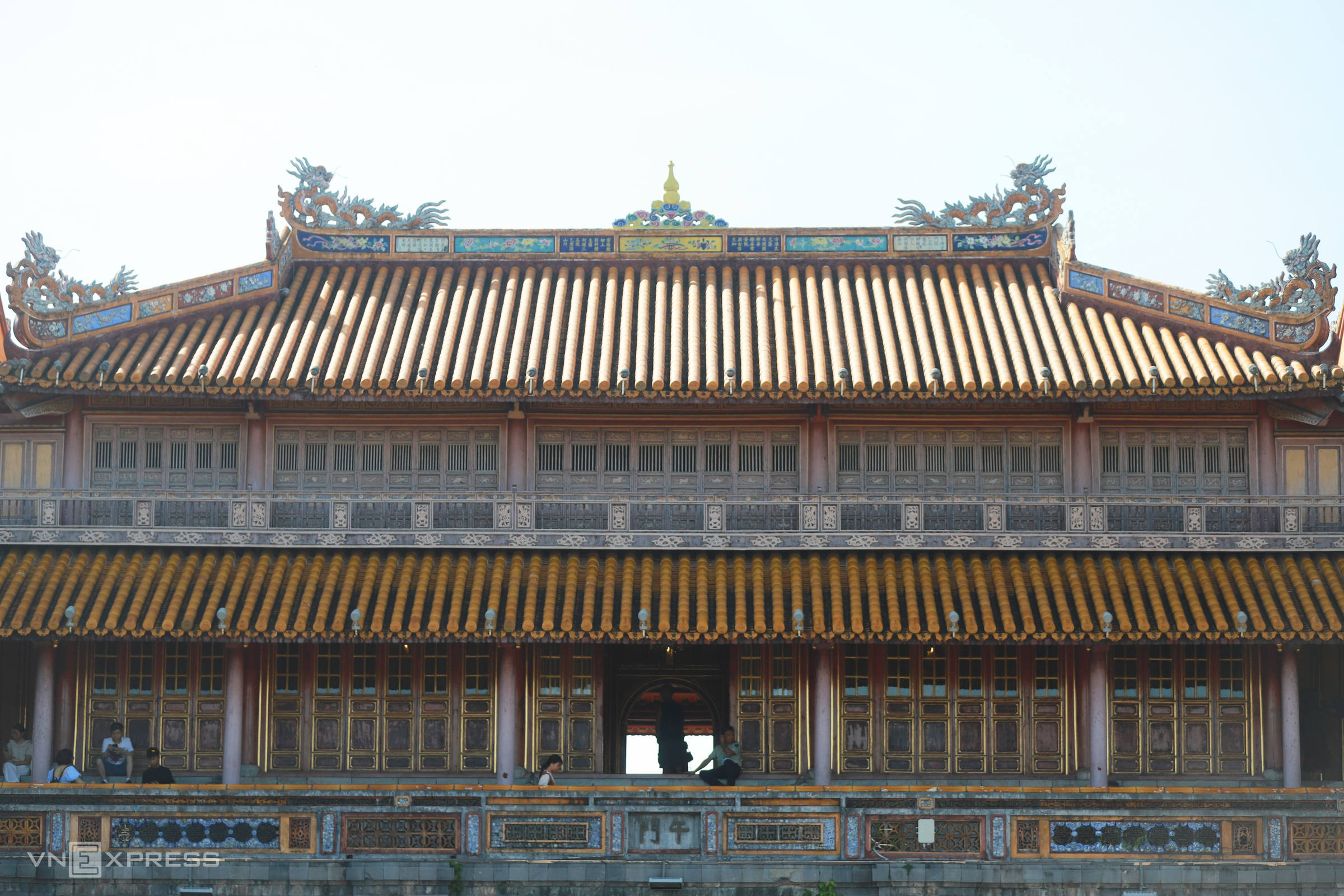 |
Similar to the Nguyen Dynasty, a bronze bell and drum are placed on either side of Ngu Phung Pavilion. Historically, the bell and drum were used to announce court hours and major ceremonies at the Ngo Mon area.Vo Thanh |
The two-story Ngu Phung Pavilion features a wooden frame constructed entirely of ironwood, with 100 columns. The lower roof sections are interconnected, encircling the pavilion to shelter the surrounding railings.Vo Thanh
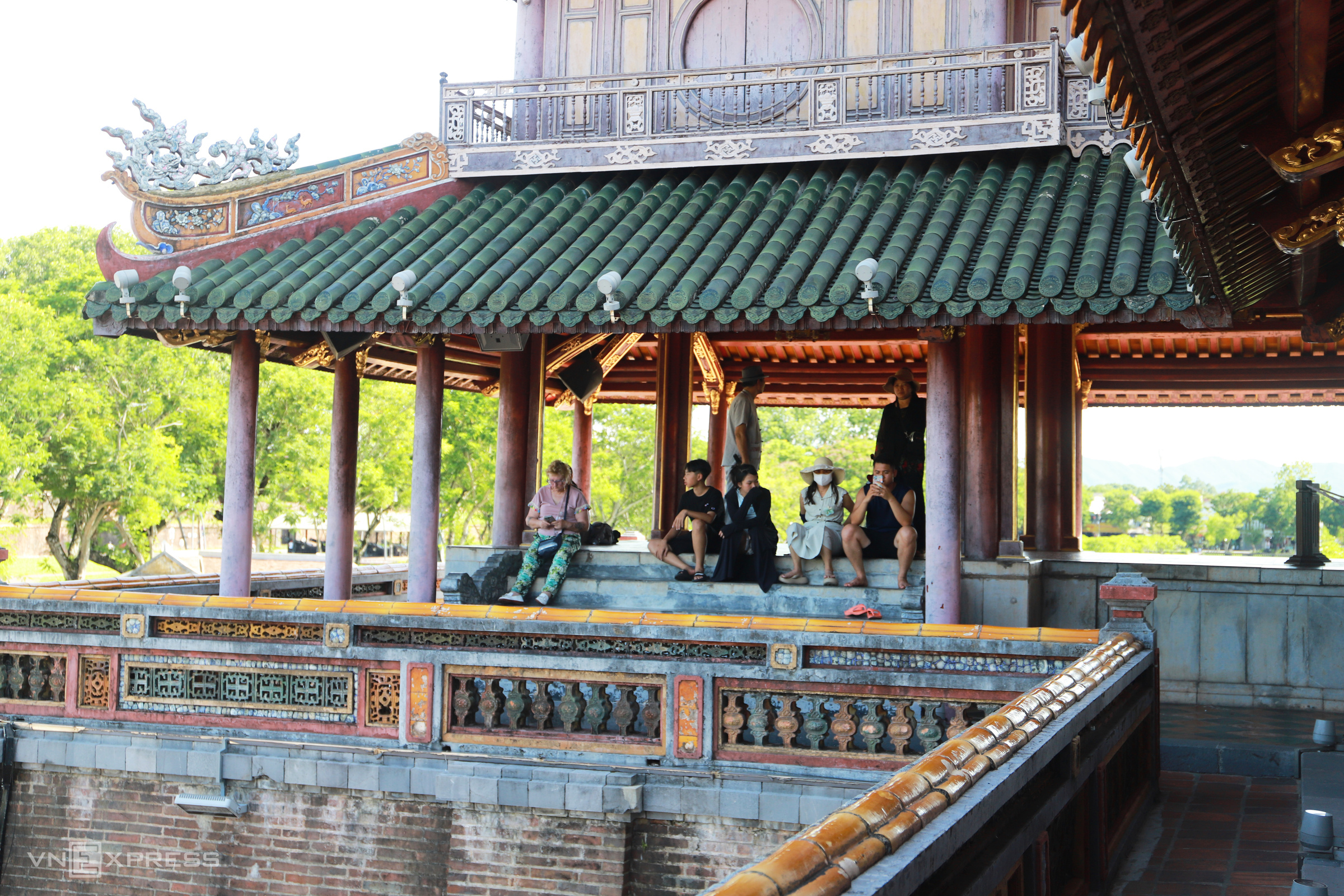 |
From Ngu Phung Pavilion, visitors can observe Thai Hoa Palace behind and Ky Dai in front. These days, Ngu Phung Pavilion is a popular destination for locals and tourists.Vo Thanh |
The pavilion's railings are decorated with yellow tube tiles. Visitors can enjoy views of Ky Dai, Thai Hoa Palace, and Thai Dich Lake from Ngu Phung Pavilion.Vo Thanh
 |
Ngu Phung Pavilion viewed from 23 Thang 8 Street. The area in front of Ngo Mon Gate is where, 80 years ago, the people of Hue gathered to witness emperor Bao Dai's abdication ceremony.Vo Thanh |
The wooden lantern system, lacquered and gilded, depicts phoenixes and dragons.Vo Thanh
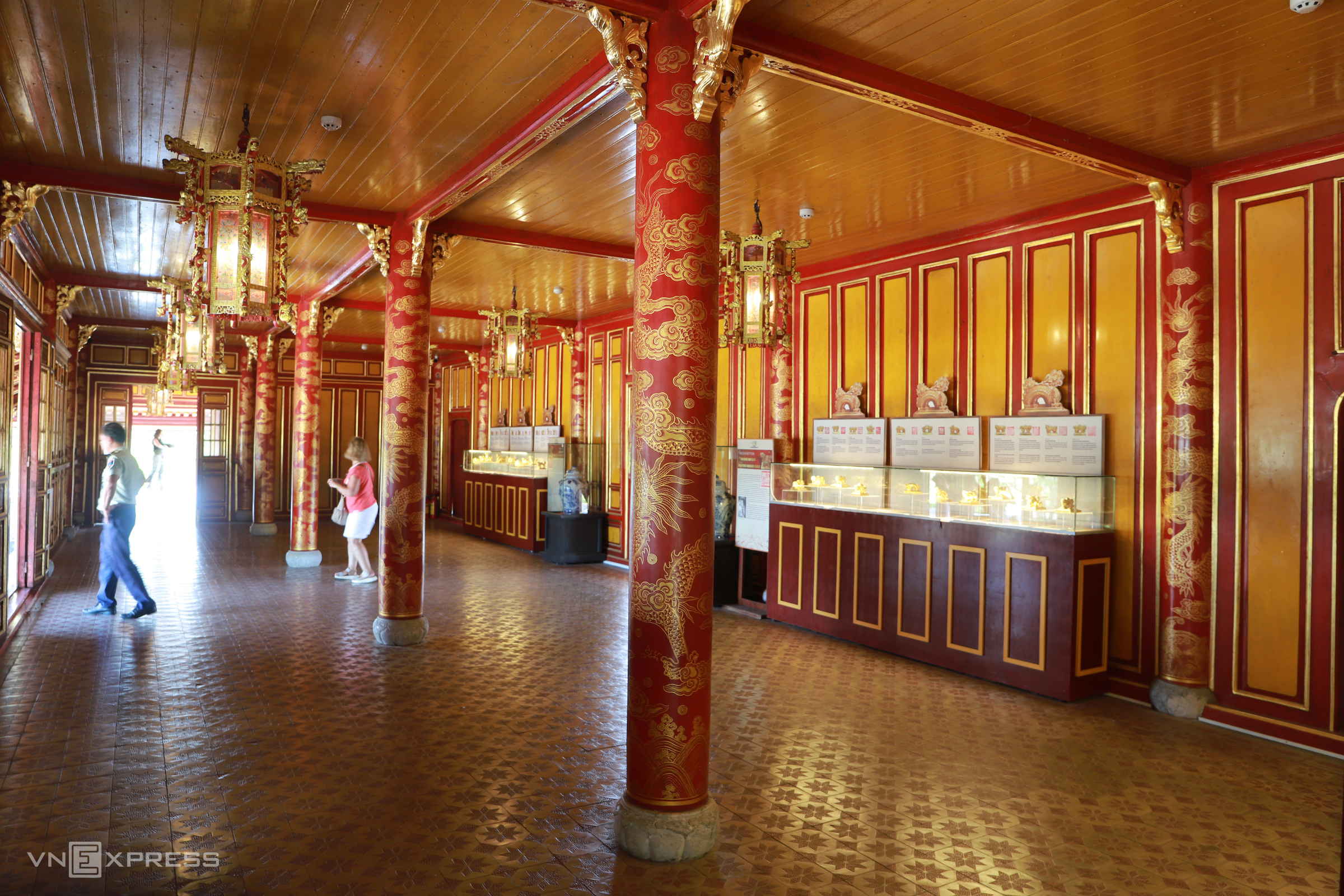 |
Inside Ngu Phung Pavilion, numerous ironwood columns are lacquered and gilded, with dragon motifs. Today, this area displays Nguyen Dynasty artifacts and hosts exhibitions for visitors.Vo Thanh
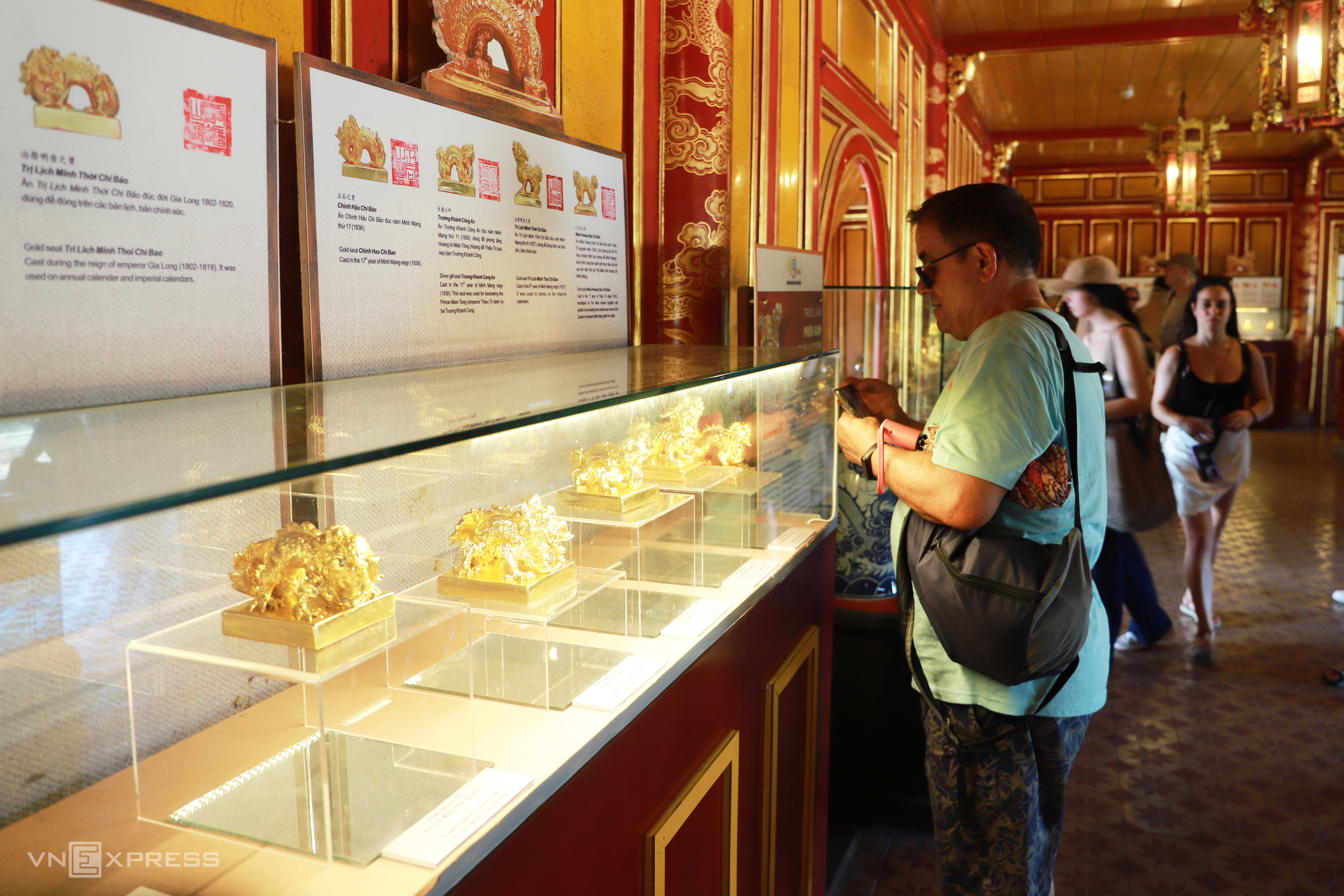 |
Ceramic replicas of Nguyen Dynasty seals are on display at Ngu Phung Pavilion. Many visitors express admiration for the intricate craftsmanship of the reproduced seals.Vo Thanh
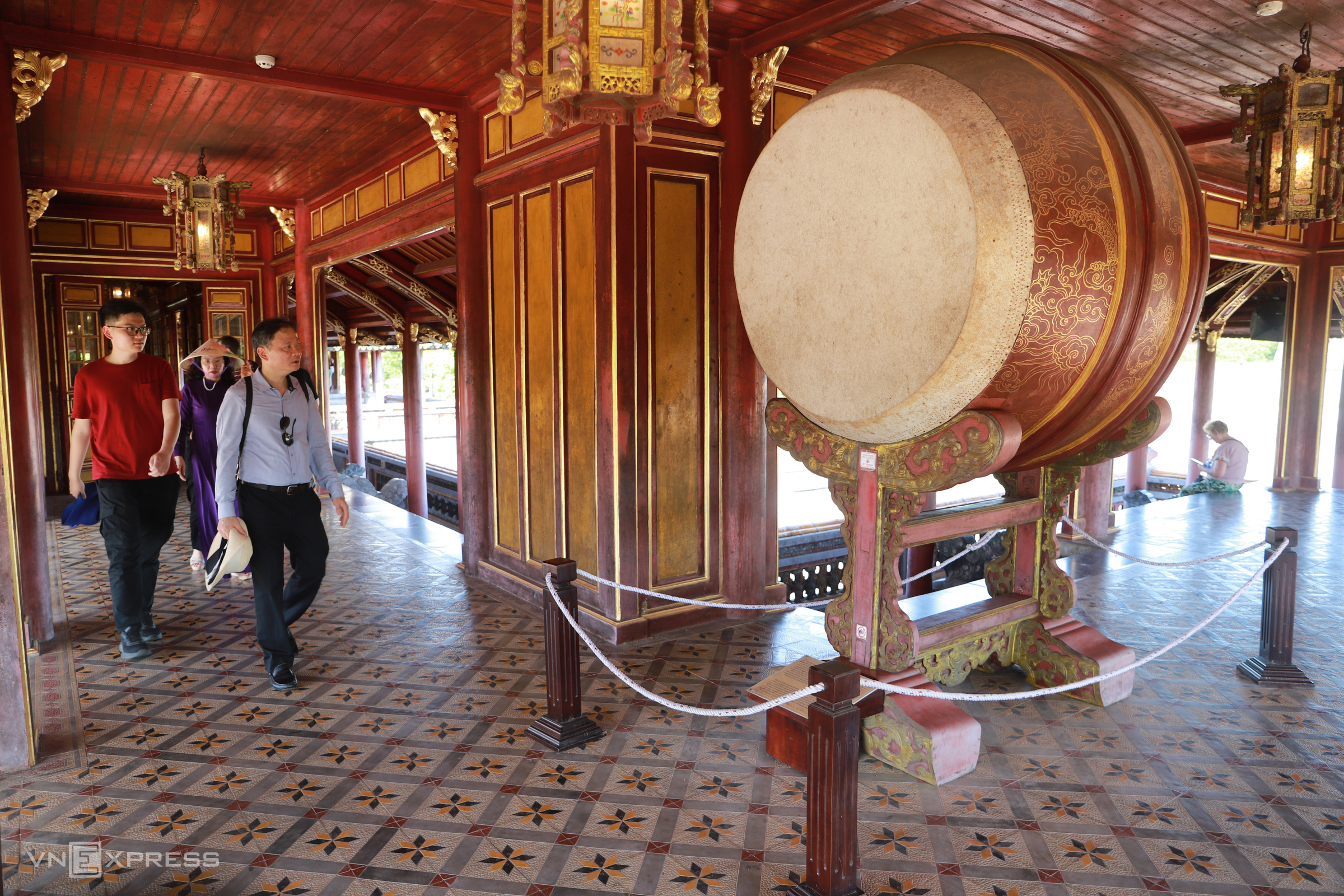 |
Similar to the Nguyen Dynasty, a bronze bell and drum are placed on either side of Ngu Phung Pavilion. Historically, the bell and drum were used to announce court hours and major ceremonies at the Ngo Mon area.Vo Thanh
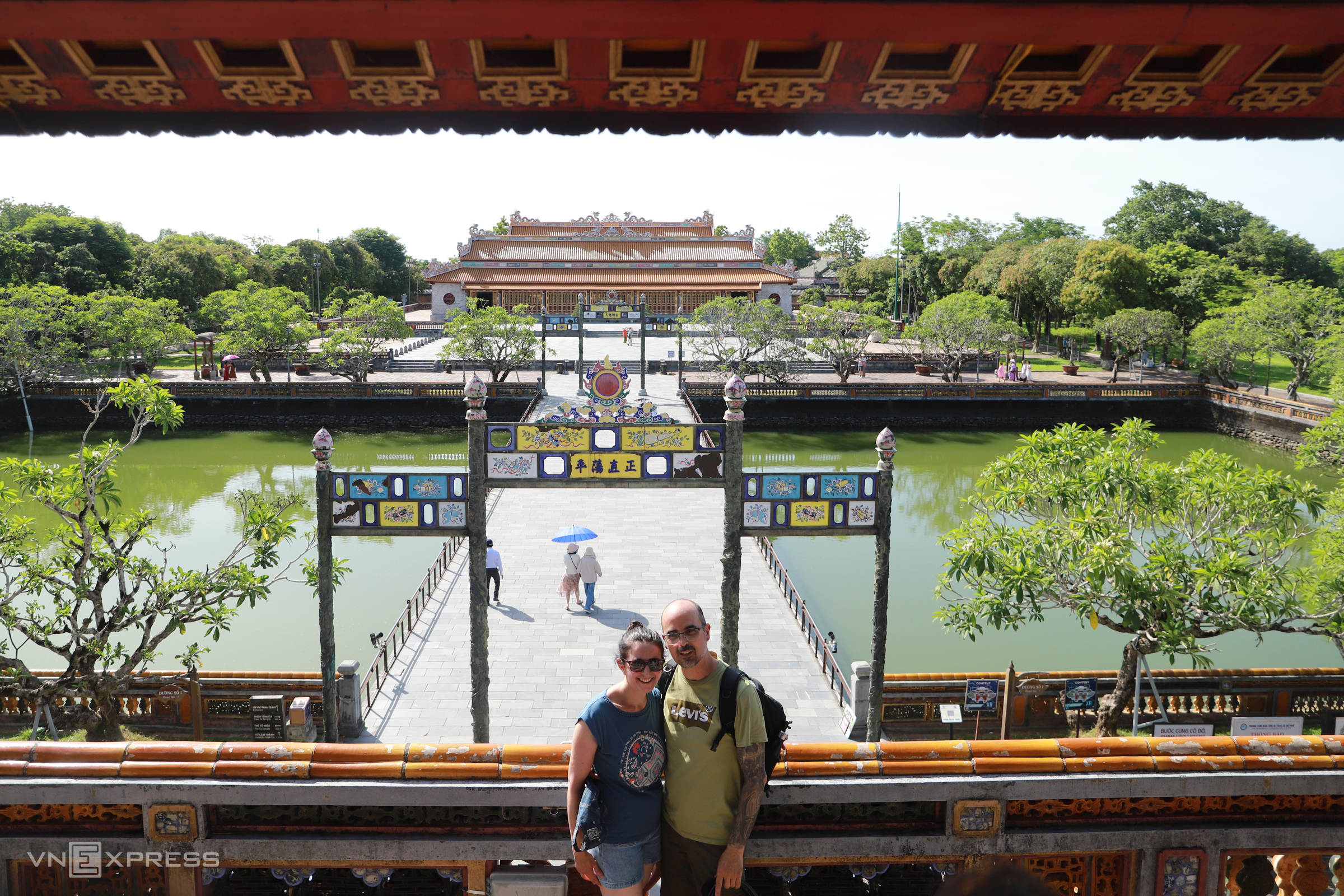 |
From Ngu Phung Pavilion, visitors can observe Thai Hoa Palace behind and Ky Dai in front. These days, Ngu Phung Pavilion is a popular destination for locals and tourists.Vo Thanh
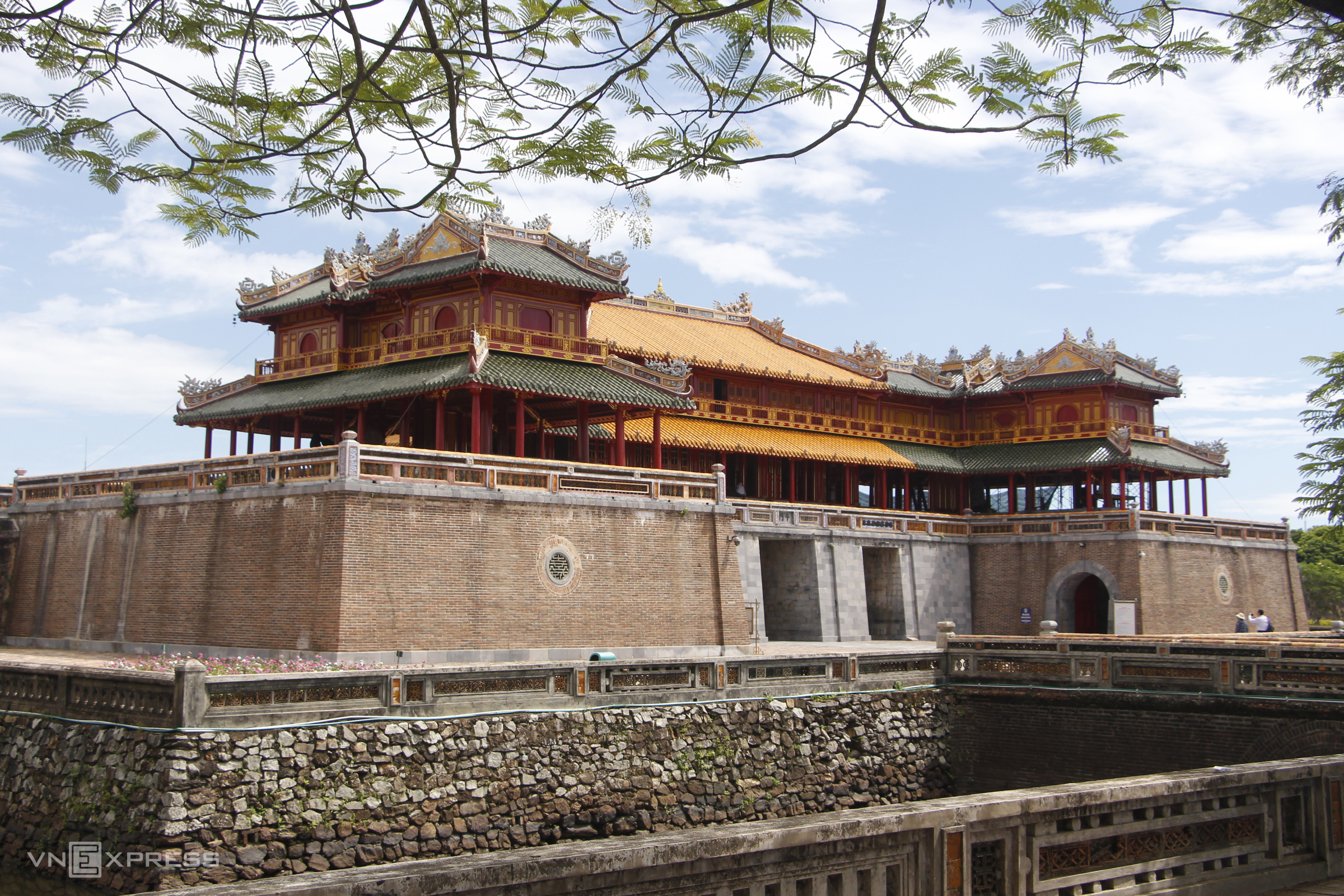 |
Ngu Phung Pavilion viewed from 23 Thang 8 Street. The area in front of Ngo Mon Gate is where, 80 years ago, the people of Hue gathered to witness emperor Bao Dai's abdication ceremony.Vo Thanh







